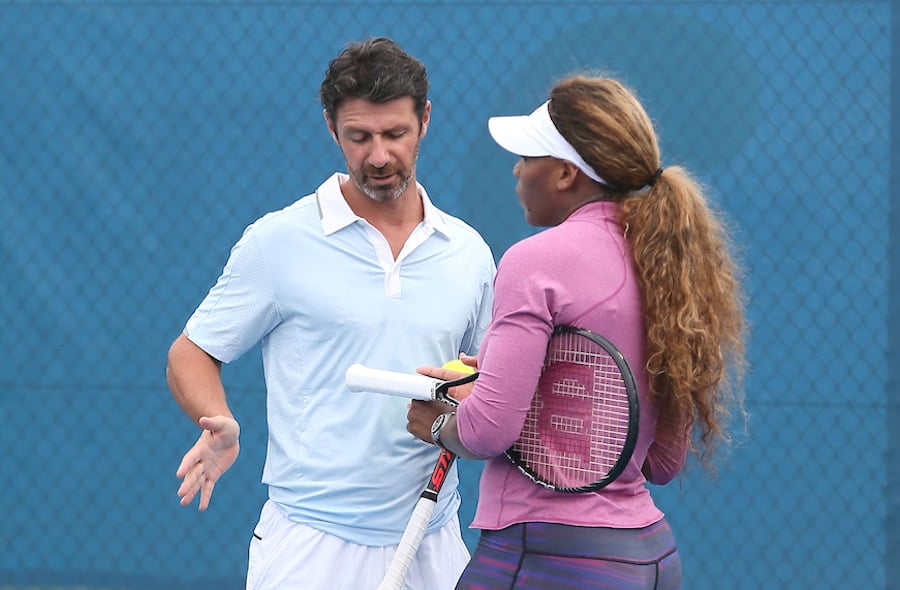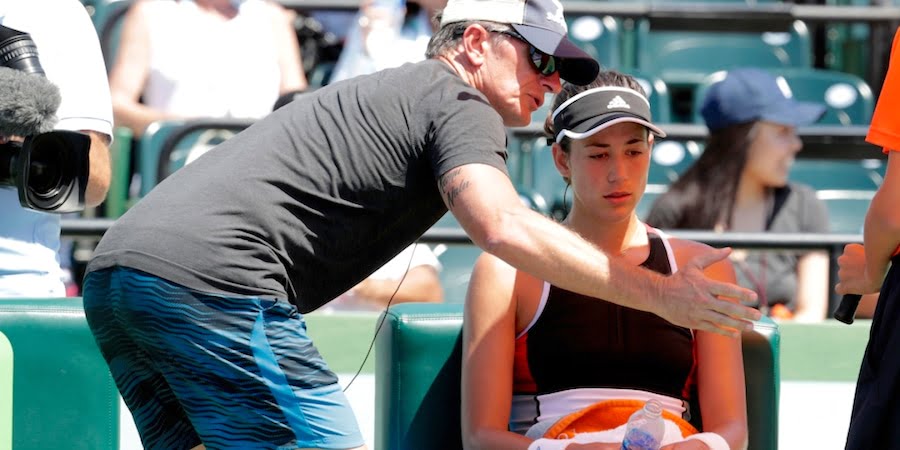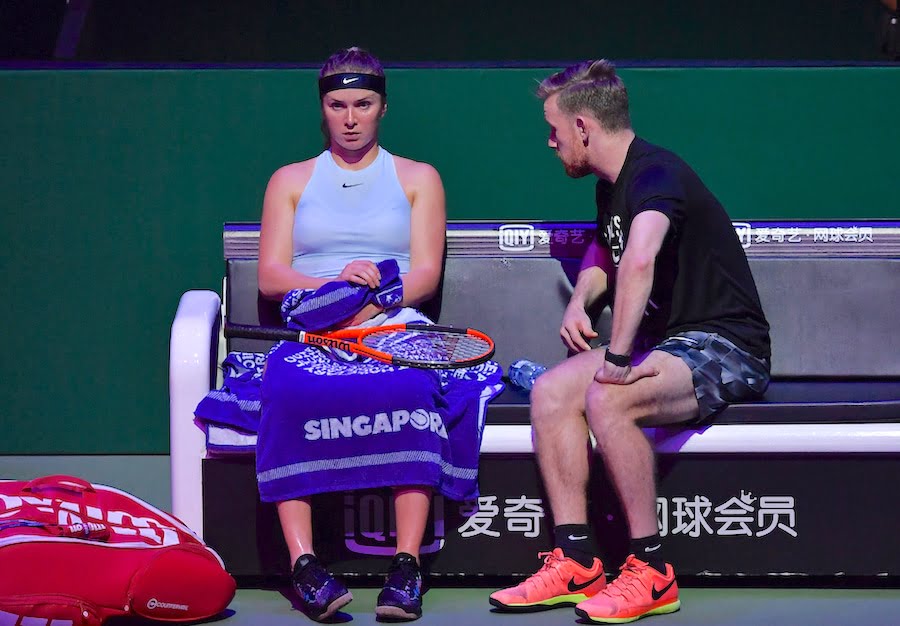
Legendary coach to World No.1 asks “Why does tennis ban on-court coaching when every other sport allows it?”
Patrick Mouratoglou, coach to Serena Williams – the greatest female player of all time, thinks we need to modernise to attract new fans – and the best way is to get spectators and TV viewers more emotionally involved
One very good thing has happened as a consequence of Serena Williams’ experience in the US Open final: people throughout tennis are again discussing the whole issue of on-court coaching. It is a subject which has actually been on the agenda for all the sport’s governing bodies for five years now.
I have never understood why tennis is just about the only sport in which coaching during matches is not allowed. You see it all the time in team sports, with coaches instructing their players from the sidelines.
You also see it in individual sports. Boxers receive a constant stream of advice from their corners, cyclists on the road have radio contact with their teams and golfers are talking regularly to their caddies.
People who oppose on-court coaching say this is because tennis is a one-against-one sport in which it should be up to the players to work out how to beat their opponents. But why should tennis be so different to any other sport? The essence of every individual sport is about trying to find ways to beat your opponents – and in other sports you are allowed to do so with the help of your coach. Moreover, as Rafa says, when you are travelling all year with your coach it does not make sense not to be allowed to use that person at the most important moments.

It is also a very basic truth that the vast majority of tennis coaches are actually coaching on court, despite the rules. Occasionally the players are punished for it, but for the most part they are not.
Look at how many times players look towards their box during a match. Some do it after every single point. Of course the coaches are usually discreet in the way they give messages to their players – they do it with signs or with coded signals – but most of them also communicate verbally.
Those who continue to oppose on-court coaching are either watching matches on TV, in which case they can’t see everything that is happening on court, or they are ignoring the evidence of their own eyes.
So if on-court coaching is happening anyway, would it not be much better to authorise it in a structured way?
The good thing is that on-court coaching is already being allowed in many areas of our sport. For the last two years the US Open has allowed on-court coaching in qualifying and in junior matches. Coaches are allowed to talk to their players when they are on their side of the net. When the player is on the other side of the net they can communicate with gestures. At changeovers the players can come over to the side of the court to talk to their coaches.
On the WTA tour, players are allowed to call their coaches on to court to talk to them at one changeover in every set, while the ATP allows players at the Next Gen Finals to communicate with their coaches via a headset at the end of each set. In Davis Cup and Fed Cup, of course, the captains actually sit on the court and are talking to their players throughout the match.

The TV companies love to show this interaction between players and coaches. It adds value to what the viewers are watching.
Seeing and hearing the coaches and players talking to each other personalises the sport and brings out their characters. Look at how often the cameras already focus on the coaches during matches. How much more interesting would it be if viewers could also hear the coaches talking to their players? Listening to the communication between a player and a coach can be very interesting and can provide real insight into the game.
Emotions can run high when coaches talk to their players during matches. Sometimes the players don’t like to hear what their coaches are saying, but this all adds to the drama.
Sometimes you see a coach trying to calm the player down. On other occasions the coach’s intervention might make the player angry, but it might also produce a great reaction from the player on the court. It’s all a very good way of showing how coaches do their work and how players react to them.
If we want to attract new people to tennis we have to realise that our sport is complex. It’s sometimes not easy for new people to get into the sport if they are not already a fan.
To attract new people you need to get them emotionally involved. You want spectators and TV viewers to have opinions about the players – and the coaches – and to know who they like and don’t like. Watching the interaction between players and coaches is a very good way of achieving this.
If we don’t involve people in this way, then tennis is only ever going to be followed by pure tennis lovers. To attract new fans we need to offer more than just the sport itself. We need to show them the personalities of the people they are watching.
Tennis has to become more modern, which is difficult because the traditionalists are very powerful. Of course we have to keep those elements that make tennis so special, but we also have to appeal to a modern audience.
I would love to see coaches on the court in all matches, as you see in Davis Cup and Fed Cup. If people consider that a step too far, I would advocate the WTA rule, though I would prefer it if coaches could come on court more often.
The problem with the system they have experimented with at the US Open is that for the most part you cannot hear what the coaches and players are saying. In my opinion that should be the main reason for allowing on-court coaching.
For that reason I would also make it obligatory for all players and coaches to communicate in English. It’s important that TV viewers can understand what is being said, even if it’s through the commentators translating and explaining what the coach and the player have been saying. Having the commentators discussing what the coach and player have been talking about all adds to the interest.
If the coach and player are communicating in Slovakian or Arabic or Mandarin, most people – including the commentators – aren’t going to understand what is being said.
English is the international language of tennis. I know there are some coaches, even at a high level, who do not speak very good English, but that is not right. We are professional coaches. We travel on the tour all year and we’re supposed to speak English.
At the moment we’re in the worst of all worlds. On-court coaching is clearly widespread, but it is unstructured, players are occasionally given code violations for it and TV viewers are given no insight into what the coaches are telling their players.
The good news is that we are clearly moving towards a situation where on-court coaching will be allowed everywhere. I don’t know whether that will happen next year, the year after, in five years’ time or whenever, but it is clearly going to happen. And if tennis is to modernise and attract new generations of fans, it is one of the ways in which our sport must change.

Patrick Mouratoglou is the coach of Serena Williams and founder and president of the Mouratoglou Tennis Academy in the south of France
To read more amazing articles you can explore Tennishead magazine here or you can subscribe for free to our email newsletter here


